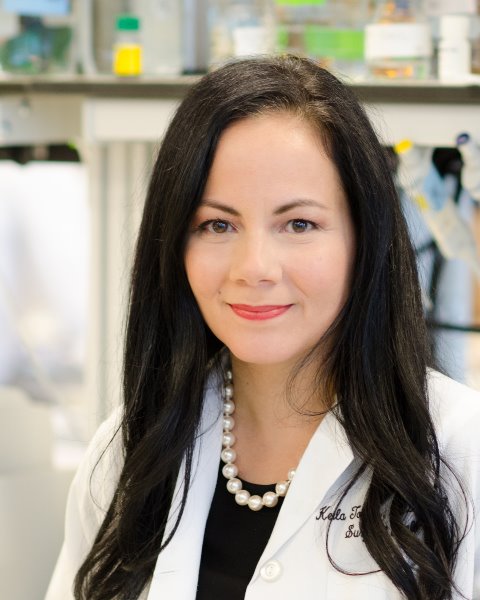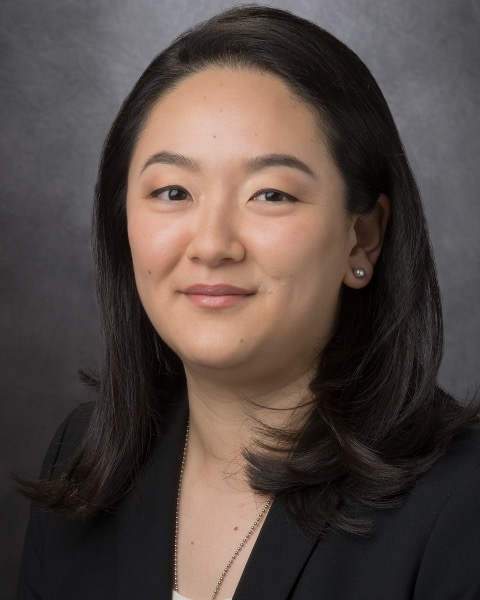Sarcoma
P59: Evaluation of the MasSpec Pen Technology for Molecular Identification of Sarcomas and Surgical Margin Assessment

Keila E. Torres, MD
Associate Professor
Department of Surgical Oncology, The University of Texas MD Anderson Cancer Center
Houston, Texas, United States- AM
Ashley E. Montgomery, BS
Medical Student
Baylor College of Medicine
Houston, Texas, United States 
Pujita Munnangi, BS (she/her/hers)
Medical Student
Texas A&M University, Texas, United States
Alicia Gingrich, MD (she/her/hers)
Complex General Surgical Oncology Fellow
University of Texas MD Anderson Cancer Center
Houston, Texas, United States- SL
Sharon Landers, PhD
Research Scientist
MD Anderson Cancer Center, United States - SW
Sintawat Wangsiricharoen, MD
Assistant Professor
Pathology and Laboratory Medicine at Oregon Health and Science University
Portland, Oregon, United States - AB
Angela Bhalla, PhD
Research Scientist
MD Anderson Cancer Center, United States - PL
Patrick P. Lin, MD
Professor in the Department of Orthopaedic Oncology
MD Anderson Cancer Center, United States - VL
Valerae O. Lewis, MD
Professor in the Department of Orthopaedic Oncology
MD Anderson Cancer Center, United States - BM
Bryan S. Moon, MD
Professor in the Department of Orthopaedic Oncology
MD Anderson Cancer Center, United States - SS
Shalin Shreyaskumar, MD
Assistant Professor
The University of Texas MD Anderson Cancer Center
Houston, Texas, United States 
Heather G. Lyu, MD, MBI
Assistant Professor
Department of Surgical Oncology, The University of Texas MD Anderson Cancer Center, United States
Christopher P. Scally, M.D.
Assistant Professor
Department of Surgical Oncology, The University of Texas MD Anderson Cancer Center, Houston TX, USA, United States
Emily Z. Keung, MD (she/her/hers)
Assistant Professor of Surgical Oncology
The University of Texas MD Anderson Cancer Center
Houston, Texas, United States.jpg)
Christina L. Roland, MD MS
Associate Professor of Surgical Oncology
The University of Texas MD Anderson Cancer Center
Houston, Texas, United States
Kelly K. Hunt, MD (she/her/hers)
Professor & Chair
Department of Breast Surgical Oncology, MD Anderson Cancer Center, Houston, TX, USA
Houston, Texas, United States- IM
Ian McCutcheon, MD
Professor in the Department of Neurosurgery
MD Anderson Cancer Center, United States - JB
Justin E. Bird, MD
Associate Professor in the Department of Orthopaedic Oncology
MD Anderson Cancer Center, United States - WY
Wendong Yu, MD, PhD
Associate Professor, Department of Pathology
MD Anderson Cancer Center, United States - LE
Livia S. Eberlin, PhD
Associate Professor of Surgery
Baylor College of Medicine, United States
Submitter(s)
Oral Poster Presenter(s)
Author(s)
Surgical resection with negative margins is the standard treatment of localized bone and soft tissue sarcomas. Intraoperative bone and soft tissue sarcoma tissue identification and surgical margin evaluation are challenging, resulting in subjectivity between centers. To address this problem, our goal is to evaluate the applicability of the MasSpec Pen (MSPen) in accurately identifying sarcoma subtypes based on metabolite and lipid profiles compared to normal tissues.
Methods:
The study was designed in two phases using retrospective sets of banked tissue samples and prospective analysis of tissues in the operating room. One hundred twenty-one frozen sarcoma tissues, including myxofibrosarcomas, well-differentiated liposarcomas, de-differentiated liposarcomas, osteosarcomas, chordomas, malignant peripheral nerve sheath tumors (MPNST), neurofibromas were identified. Controls were bone, cartilage, fat, nerve, skeletal, and smooth muscle tissues. Sarcoma pathologists confirmed each sample's diagnosis. The MSPen integrated into an Orbitrap Exploris mass spectrometer was used to analyze the tissues to define their molecular profiles. Performance using an Orbitrap and a linear ion trap mass spectrometer was tested. Statistical classification models are being generated using logistic regression with LASSO regulation and will be assessed using training, validation, and test sets. The classifier's sensitivity, specificity, and accuracy will be compared to histopathologic analysis.
Results:
Analysis of 121 sarcoma and normal tissues (described in Methods) was performed with the MSPen. We detected distinct metabolite and lipid profiles for the analyzed histologic sarcoma subtypes, which were used as a training set to create a statistical classification model for the sarcoma subtypes in comparison to normal tissue. Based on the number of samples, we obtained preliminary results for some subtypes. Please see Table 1. For example, the chondrosarcoma vs. normal classification model generated a sensitivity of 100.00%, specificity of 90.91%, and overall accuracy of 94.74%.
Conclusions:
The MSPen leverages its non-destructive nature for direct and gentle analysis of tissues. The MSPen and statistical analysis using logistic regression with LASSO regulation offer a promising technology for sarcoma diagnosis and discrimination from normal tissue. These data support further evaluation of the MSPen in the operating room for in vivo and ex vivo use in conjunction with standard surgical tools for margin assessment.
Learning Objectives:
- Discuss mass spectrometry as a new methodology to evaluate surgical margins
- Evaluate sarcoma subtypes based on lipid and metabolite profiles
- Implement new tools for in vivo and ex vivo surgical margin assessment
